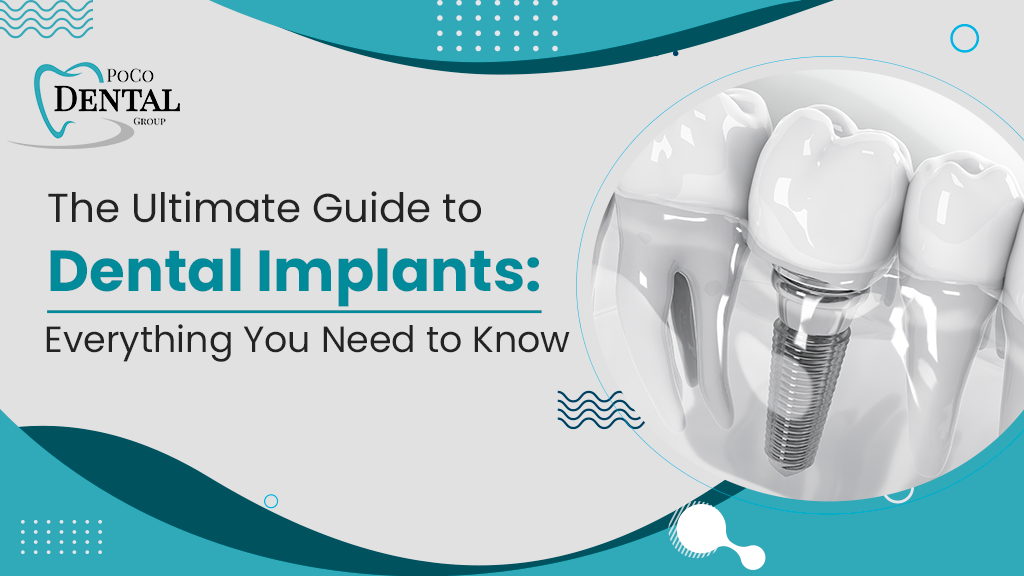Are you tired of hiding your smile because of missing teeth? Do you long for a solution that restores your confidence and improves your oral health? Look no further! Welcome to “The Ultimate Guide to Dental Implants: Everything You Need to Know.” This comprehensive blog post will delve into the world of dental implants – the state-of-the-art solution that has transformed countless lives. We’ve covered everything if you’re curious about the procedure, costs, benefits, or aftercare. Prepare to embark on an enlightening journey toward achieving a dazzling smile and optimal oral well-being. Let’s dive in!
What are Dental Implants?
Dental implants are an increasingly popular treatment for missing teeth. They are robust, durable and look just like your natural teeth. Implants are an excellent option for people who have lost one or more teeth due to injury, disease or decay.
If you are considering dental implants, it is essential to understand the process and what to expect. This guide will provide everything you need about dental implants, from the consultation to the final product.
Advantages of Dental Implants
If you’re considering dental implants, what are the advantages of this popular tooth replacement option? Here are just a few of the many benefits that dental implants have to offer:
Improved Oral Health: Unlike dentures or bridges, which can trap food particles and lead to gum disease, dental implants are placed directly into your jawbone and don’t require special care beyond regular brushing and flossing.
Improved Speech: Because they don’t slip or move around like dentures can, dental implants won’t affect your speech.
Improved Comfort: Dental implants are securely anchored in place, so you won’t have to worry about them slipping or moving around in your mouth.
Increased Durability: With proper care, dental implants can last a lifetime.
Types of Dental Implants
Several types of dental implants are available, and the type that’s right for you will depend on several factors. The most common types of dental implants are:
Endosteal dental implants: These are the most used type of dental implant, and they’re placed directly into the jawbone. Endosteal implants are typically made of titanium and can be used to support a single tooth, bridge, or denture.
Subperiosteal dental implants: These implants are placed under the gum but on top of the jawbone, and they’re typically used for patients who don’t have enough jawbone density to support endosteal implants. Subperiosteal implants are made of metal frames that protrude through the gum and are attached to the jawbone.
Mini dental implants: Mini dental implants are smaller than traditional endosteal implants, and they’re typically used to support dentures. They’re also less invasive to place, so they may be an option for patients who don’t want or can’t have surgery.
Procedure for Getting Dental Implants
If you’re considering dental implants, you may want to know what the procedure is like. Getting dental implants is a multi-step process that can take several months. But it’s worth it! Dental implants are a permanent solution to missing teeth; they look and feel like your natural teeth.
The first step in getting dental implants is to consult with your dentist or implant specialist. They will evaluate your mouth and determine if you’re a good candidate for dental implants. If you are, they will develop a treatment plan specifically for you.
Next, you will undergo surgery to place the implant into your jawbone. This is done under anaesthesia so that you won’t feel any pain. Once the implant is in place, your jawbone will need time to heal and fuse to the implant. This can take several weeks or even months.
Once your jawbone has healed, you will return to your dentist or implant specialist to have the abutment (a small connector piece) placed on the implant. Then, they will take impressions of your mouth to create a custom-made replacement tooth (or teeth). It can take several weeks for your replacement tooth (or teeth) to be ready.
Once your replacement tooth (or teeth) is ready, it will be attached to the abutment and checked for fit. Once everything looks good, you’ll be all done.
Post-Procedure Care and Maintenance
After placing dental implants, following your dentist’s instructions for post-procedure care is essential. This will help ensure that your implants heal properly and last long.
Some basic things you can do to care for your implants include:
-Brushing and flossing your teeth twice a day. Be sure to use a soft-bristled toothbrush and avoid putting too much pressure on your teeth.
-Avoid hard or crunchy foods that could damage your implants. Cut tough meats and vegetables into smaller pieces and avoid biting into hard candy or ice cubes.
Talk to your dentist if you have any questions or concerns about caring for your dental implants. They will be able to give you specific instructions based on your case.
Alternatives to Dental Implants
Patients who are not good candidates for dental implants or cannot afford the procedure may be candidates for other tooth replacement options. Alternatives to dental implants include:
Bridge: A bridge is a false tooth, known as a pontic, attached to adjacent teeth called abutments. Dental Bridges can be made from gold, alloys, porcelain, or a combination of these materials and are often used when there are fewer than three missing teeth in a row.
Partial denture: A partial denture is a removable appliance that replaces one or more missing teeth. It consists of artificial teeth attached to a pink or gum-colored base. Metal clasps or precision attachments help keep the partial denture in place.
Complete denture: A full denture replaces all teeth in the upper or lower jaw. They are made from impressions of your mouth and gums and can take several weeks. Complete dentures usually have metal clasps that attach to natural teeth and rest on your gums.
Implant-supported bridge: An implant-supported bridge is similar to a regular bridge but is supported by dental implants instead of natural teeth. This option is often used when fewer than three missing teeth are in a row.
Conclusion
We hope this guide to dental implants has covered everything you need to know about the procedure, from the different types of implants available to what is involved in the implantation process. Dental implants can be an excellent way for people with missing teeth or loose dentures to regain their smiles and feel more confident. Suppose you are considering having dental implants fitted. In that case, you must research your options carefully to make an informed decision and find a qualified professional who can provide quality care.
At PoCo Dental Group, we understand the impact of missing teeth on your confidence and overall well-being. We offer dental implants Port Coquitlam, a revolutionary solution replicating natural teeth’ look, feel, and function. Implants provide a stable foundation for replacement teeth, prevent bone loss, and improve your ability to chew and speak comfortably.
Discover the transformative power of dental implants at PoCo Dental Group. Regain your confidence, restore your smile, and enjoy a lifetime of improved oral health. Contact us today to schedule a consultation and take the first step toward a brighter, healthier future. Your perfect smile awaits!




